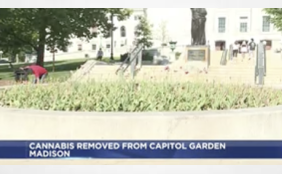TOPLINE:
The availability of medical cannabis has little effect on prescription rates of opioids, nonopioid pain medicines, and other pain interventions, according to anew studypublished inAnnals of Internal Medicine.
Effects of U.S. State Medical Cannabis Laws on Treatment of Chronic Noncancer Pain
METHODOLOGY:
- Cannabis advocates suggest that legal medical cannabis can be a partial solution to the opioid overdose crisis in the United States, which claimed more than 80,000 lives in 2021.
- Current research on how legalized cannabis reduces dependence on prescription pain medication is inconclusive.
- Researchers examined insurance data for the period 2010 to 2022 from 583,820 adults with chronic noncancer pain.
- They drew from 12 states in which medical cannabis is legal and from 17 in which it is not legal to create a hypothetical randomized trial. The control group simulated prescription rates where medical cannabis was not available.
- Authors evaluated prescription rates for opioids, nonopioid painkillers, and pain interventions, such as physical therapy.
TAKEAWAY:
In a given month during the first 3 years after legalization, for states withmedical cannabis, the investigators found the following:
- There was an average decrease of 1.07 percentage points in the proportion of patients who received any opioid prescription, compared to a 1.12 percentage point decrease in the control group.
- There was an average increase of 1.14 percentage points in the proportion of patients who received any nonopioid prescription painkiller, compared to a 1.19 percentage point increase in the control group.
- There was a 0.17 percentage point decrease in the proportion of patients who received any pain procedure, compared to a 0.001 percentage point decrease in the control group.
IN PRACTICE:
“This study did not identify important effects of medical cannabis laws on receipt of opioid or nonopioid pain treatment among patients with chronic noncancer pain,” according to the researchers.
SOURCE:
Thestudywas led by Emma E. McGinty, PhD, of Weill Cornell Medicine, and was funded by the National Institute on Drug Abuse (NIDA).
LIMITATIONS:
The investigators used a simulated, hypothetical control group that was based on untestable assumptions. They also drew data solely from insured individuals, so the study does not necessarily represent uninsured populations.
DISCLOSURES:
McGinty reports receiving a grant from the National Institute on Drug Abuse (NIDA). White, Stuart, McCourt, Seewald, and Tormohlen report support from NIDA. Bicket reports support from the National Institute of Health (NIH). Rutkow reports support from NIDA and NIH.
Abstract
Background:
State medical cannabis laws may lead patients with chronic noncancer pain to substitute cannabis in place of prescription opioid or clinical guideline–concordant nonopioid prescription pain medications or procedures.
Objective:
To assess effects of state medical cannabis laws on receipt of prescription opioids, nonopioid prescription pain medications, and procedures for chronic noncancer pain.
Design:
Using data from 12 states that implemented medical cannabis laws and 17 comparison states, augmented synthetic control analyses estimated laws’ effects on receipt of chronic noncancer pain treatment, relative to predicted treatment receipt in the absence of the law.
Setting:
United States, 2010 to 2022.
Participants:
583 820 commercially insured adults with chronic noncancer pain.
Measurements:
Proportion of patients receiving any opioid prescription, nonopioid prescription pain medication, or procedure for chronic noncancer pain; volume of each treatment type; and mean days’ supply and mean morphine milligram equivalents per day of prescribed opioids, per patient in a given month.
Results:
In a given month during the first 3 years of law implementation, medical cannabis laws led to an average difference of 0.05 percentage points (95% CI, −0.12 to 0.21 percentage points), 0.05 percentage points (CI, −0.13 to 0.23 percentage points), and −0.17 percentage points (CI, −0.42 to 0.08 percentage points) in the proportion of patients receiving any opioid prescription, any nonopioid prescription pain medication, or any chronic pain procedure, respectively, relative to what we predict would have happened in that month had the law not been implemented.
Limitations:
This study used a strong nonexperimental design but relies on untestable assumptions involving parallel counterfactual trends. Statistical power is limited by the finite number of states. Results may not generalize to noncommercially insured populations.
Conclusion:
This study did not identify important effects of medical cannabis laws on receipt of opioid or nonopioid pain treatment among patients with chronic noncancer pain.
Primary Funding Source:
National Institute on Drug Abuse.

















